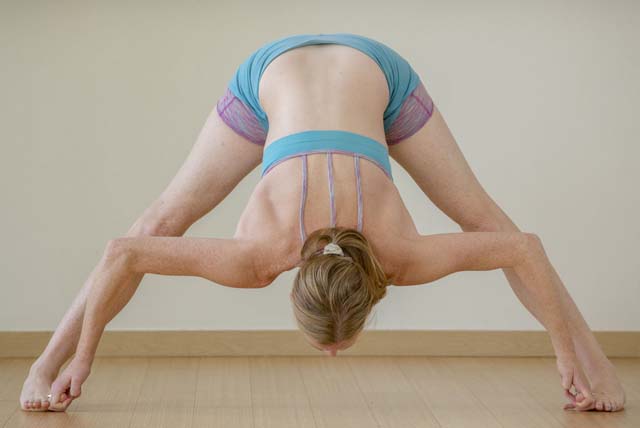Ashtanga Vinyasa vs Vinyasa Flow

There is often confusion about the meaning of ashtanga.
The term means “eight limbs”, as in Patanjali’s eightfold path outlined in the Yoga Sultras, the bible of yoga. These limbs, or aspects of spiritual yogic practice are:
- Yama: moral codes
- Niyama: self-purification and study
- Asana: posture
- Pranayama: breath control
- Pratyahara: withdrawing of the mind from the senses
- Dharana: concentration
- Dhyana: deep meditation
- Samadhi: union with the object of meditation
The eight steps or limbs work as a ladder which we can use to climb into the state of yoga. We purify the body and our actions with the first four and then access higher states of inner concentration with the last four so that we can be liberated.
The complete name, Ashtanga Vinyasa Yoga, identifies Jois’s method of yoga practice. The origin of this method has been somewhat mystified. We are told it is an ancient system of practice written down in the Yoga Korunta. The Yoga Korunta is said to have contained lists of asanas grouped into what are now the six “series” of Ashtanga Vinyasa, each a set of sequence of poses, along with original teachings on vinyasa, dristi, bandha, mudra, and philosophy.
Ashtanga Vinyasa is a highly focused practice. The practice of dristana, in which one gazes steadily upon a specified point in and between each asana, lends to pratyahara, a more internal awareness. Ujjayi pranayama is maintained throughout, creating a steady rhythm in the breath that is sustained evenly from pose to pose, its sound and sensation creating a mantra that fosters greater mental focus and acuity. Bandhas are employed in most of the practice, assisting in the regulation of pranic energy flowing through the body. The practice is tied together through vinyasa, the conscious connection of breath to movement that helps generate a “balance of strength and flexibility, lightness and heaviness, movement and stillness”. Below is the an image of the primary series sequence.
Vinyasa Flow
As in Ashtanga Vinyasa Yoga, Vinyasa Flow moves steadily from pose to pose in sequences of movements synchronized with ujjayi pranayama (however not used in hot vinyasa) often pausing to hold poses for various lengths of time while maintaining the rhythmic flow of the breath. Unlike Ashtanga Vinyasa, each class usually offers a different sequence of poses, although most use some form of Surya Namaskara A and B from the Krishnamacharya lineage. Many classes also closely follow the basic standing poses and finishing sequences found in Ashtanga Vinyasa. Many Vinyasa Flow classes apply Iyengar alignment priniciples, energetic actions within poses and use of props.
What is important while doing a posture? Read the Basic Fundamentals of Asana practice.
